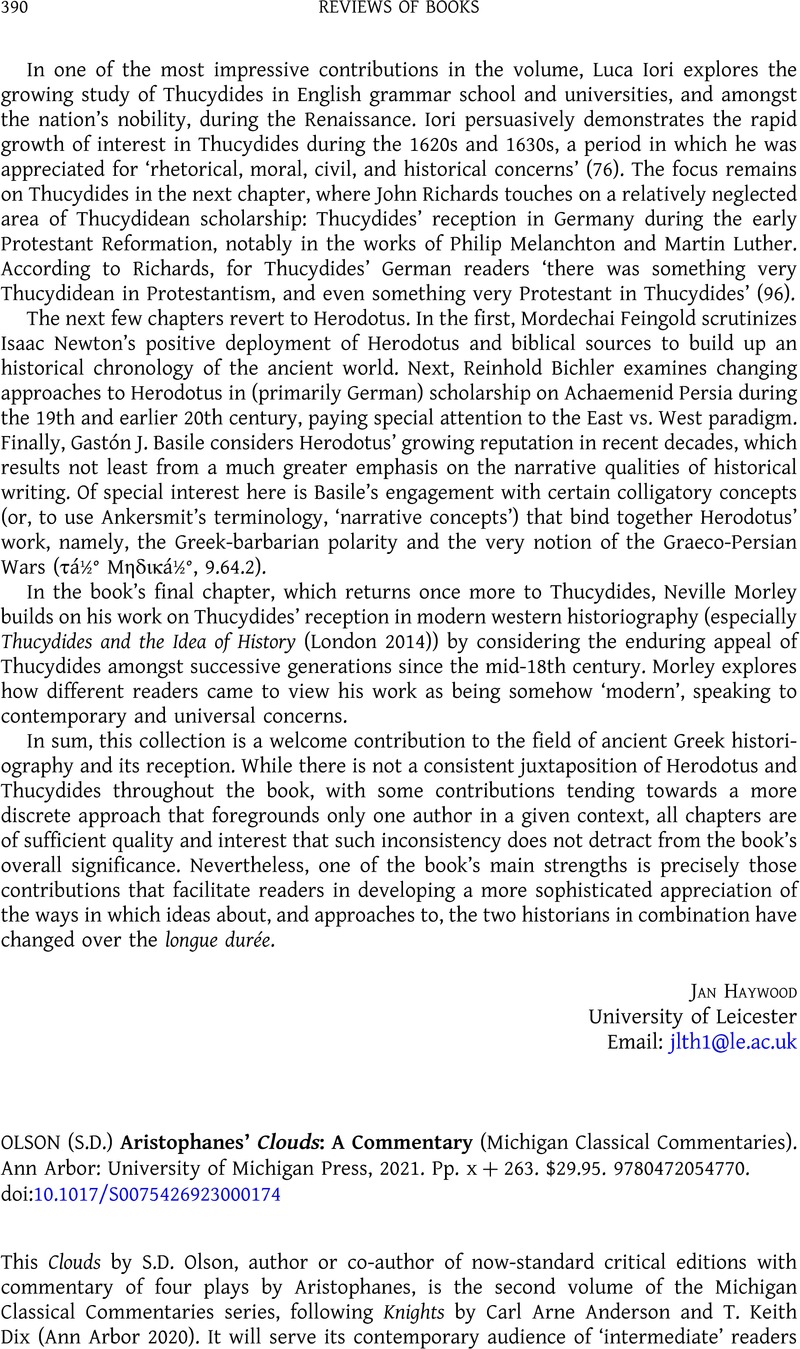No CrossRef data available.
Article contents
(S.D.) OLSON Aristophanes’ Clouds: A Commentary (Michigan Classical Commentaries). Ann Arbor: University of Michigan Press, 2021. Pp. x + 263. $29.95. 9780472054770.
Review products
(S.D.) OLSON Aristophanes’ Clouds: A Commentary (Michigan Classical Commentaries). Ann Arbor: University of Michigan Press, 2021. Pp. x + 263. $29.95. 9780472054770.
Part of:
Literature
Published online by Cambridge University Press: 26 April 2023
Abstract
An abstract is not available for this content so a preview has been provided. Please use the Get access link above for information on how to access this content.

- Type
- Reviews of Books
- Information
- Copyright
- © The Author(s), 2023. Published by Cambridge University Press on behalf of the Society for the Promotion of Hellenic Studies


